|
IDAHO FALLS, Idaho – Once the subject of futuristic movies, virtual reality (VR) technology is being used by an EM cleanup project at DOE’s Idaho National Laboratory (INL) Site with the aim of reducing potential radiation exposure to workers and improving work performance.
EM’s calcine retrieval project created a VR laboratory to plan for challenges in retrieving the granular, high-level radioactive waste. Calcine is the dried byproduct of a liquid waste generated during the INL Site’s spent nuclear fuel reprocessing mission, which ended in 1992.
In an agreement with the state of Idaho, EM is required to retrieve, treat, repackage, and prepare the 4,400 cubic meters of calcine to ship for out-of-state disposal by 2035. The material is in storage in six separate bin sets inside concrete vaults at the Calcined Solids Storage Facility at the Idaho Nuclear Technology and Engineering Center. The bins are a series of long cylinders, and the number of bins in each set varies.
Fluor Idaho, EM’s INL Site cleanup contractor, is designing a technology that could be used to retrieve calcine from an older bin set and transfer the material to a newer one. The emptied bin set would then be closed in compliance with state and federal environmental laws.
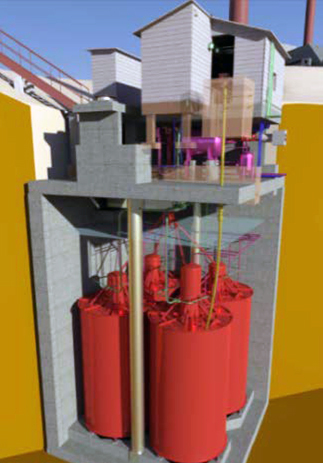 |
|
An image created using virtual reality technology shows the below-ground bin sets storing calcine inside concrete vaults at the Calcined Solids Storage Facility at the Idaho Nuclear Technology and Engineering Center. |
The project’s design team worked with 3-D computer models of the facilities where the calcine is stored, based on original construction drawings. Using those models and the VR lab’s newly acquired equipment, the team can place the likeness of engineers, technicians, and management into a virtual mock-up of hazardous areas and simulate the work tasks without the risk of exposure.
“It gives us a more complete picture of the challenges that exist within the bin set and how to overcome them,” Fluor Idaho Calcine Retrieval Project Manager Howard Forsythe said. “Using VR technology gives us a distinct advantage that we wouldn’t have otherwise had even a few years ago.”
Fluor Idaho plans to incorporate VR into more aspects of the project.
Testing of a retrieval system continues on a full-sized replica of one of the bins using a simulated calcine material. Piping and other internal obstacles were added to the mock-up to replicate the actual bin as closely as possible.
In addition to testing robotic and other technologies for calcine retrieval from one bin set, the project is developing a strategy to retrieve and close the five other bin sets. Mock-up testing will help engineers recommend a final end state for the bin sets.
-Contributor: Erik Simpson
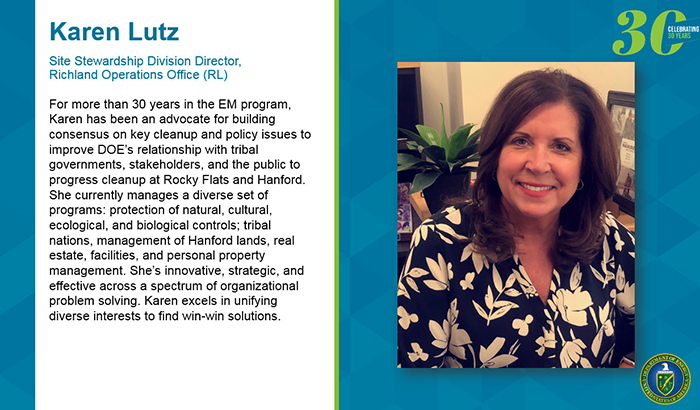

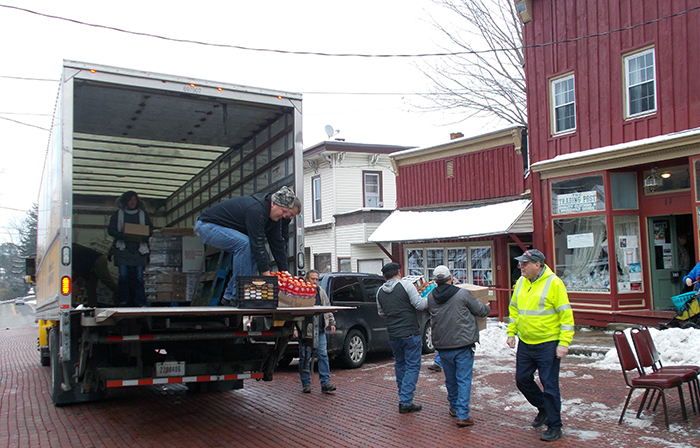 Volunteers in the West Valley Demonstration Project’s annual food drive deliver 44 turkeys and other items to a food pantry in Cattaraugus, New York.
WEST VALLEY, N.Y. – The West Valley Demonstration Project (WVDP) workforce once again surpassed its goal for the site’s annual food drive, bringing 111,000 pounds of Thanksgiving turkeys and other items to nine area food pantries.
This year’s donations boost the total food collected in the drive to 1.9 million pounds since its inception in 1989.
“The success of our food drive is a direct result of the generosity and kindness of our employees, partners, and subcontractors,” said Lettie Chilson, WVDP facility manager and food drive coordinator. “It demonstrates the positive impact that kindness can have on a community. The WVDP Food Drive helps to improve the quality of life for our neighbors serviced by the local pantries.”
This year’s goal was to collect 100,000 pounds of food — the same as last year’s drive, when the workforce brought in 108,000 pounds of food for hundreds of families in need during the holiday season.
“I am honored to be a part of an event that makes a difference in our community,” said Scott Anderson, president and general manager of CH2M HILL BWXT West Valley, EM's WVDP cleanup contractor. “The amount of food collected year after year demonstrates the generosity and kindness of our employees.”
Chilson noted that the needs of the community increase during the holiday season, when resources are spread thin.
“Community support from the WVDP Food Drive helps to meet those needs that may have gone unmet during the holiday season,” Chilson said.
-Contributor: Joseph Pillittere
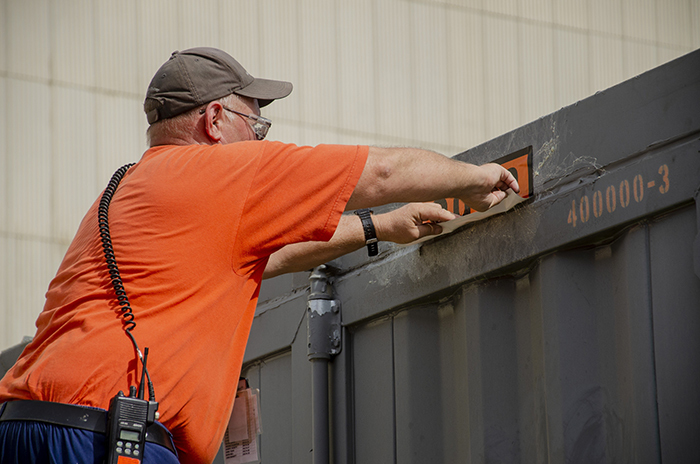 Damon Cates applies labels on a shipping container in preparation for the first cold trap leaving the EM Paducah Site.
PADUCAH, Ky. – Workers recently made progress in the deactivation and remediation of the Paducah Gaseous Diffusion Plant (PGDP) when they prepared and shipped the first of 22 cold traps stored at EM’s Paducah Site.
During PGDP’s uranium-enrichment years, cold traps supported various processes, including activities at the C-410 Feed Plant. That five-acre facility produced uranium hexafluoride (UF6). These cold traps are long, cylindrical heat exchangers that were used in C-410 to convert UF6 gas to a solid that was later liquefied, transferred to cylinders, and ultimately fed through pipes into a system of process gas equipment where enrichment occurred.
Cold traps at the PGDP range in size and can weigh as much as 16,000 pounds, about four times the weight of an automobile. Four Rivers Nuclear Partnership (FRNP), EM’s deactivation and remediation contractor for the Paducah Site, led efforts to ship the first cold trap off-site for disposal. This cold trap weighed approximately 15,000 pounds. It was packaged and shipped intact, rather than being sheared and downsized. Shipping the cold trap intact provided additional safeguards to workers by reducing the risk of exposure to hazardous materials.
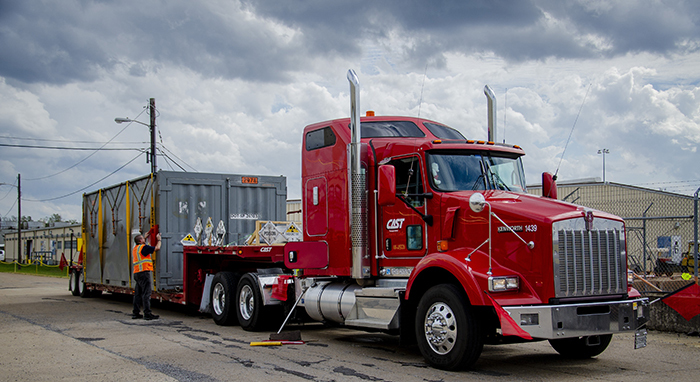 Workers secure a container to ship the first cold trap from the EM Paducah Site.
“We advance the cleanup at the Paducah Site one step at a time. The removal of this first cold trap is a step forward,” said Paducah Site Lead Jennifer Woodard, of EM’s Portsmouth/Paducah Project Office.
Myrna Redfield, president, CEO and program manager of FRNP, said a significant amount of work and planning went into preparing the cold trap for the inaugural off-site shipment.
“Our team worked many hours to ensure the work was accomplished without compromising the safety or health of our workers, the public, or the environment,” Redfield said. “This was a major accomplishment for our team.”
-Contributor: Jessica Little, Jessica Vasseur
|